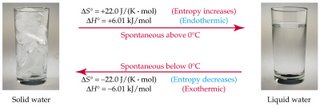Solar Energy--Even When the Sun Is not Shining
 The rate of solar energy intercepted by the earth is about 5,000 times greater than the sum of all other energy sources, but less than 0.5 percent is represented in the kinetic energy of the wind, waves and in photosyntheticstorage in plants. The amount of the solar energyintercepted by earth is only one thousandth of one millionof the total released energy in the sun. Source.
The rate of solar energy intercepted by the earth is about 5,000 times greater than the sum of all other energy sources, but less than 0.5 percent is represented in the kinetic energy of the wind, waves and in photosyntheticstorage in plants. The amount of the solar energyintercepted by earth is only one thousandth of one millionof the total released energy in the sun. Source.Using photovoltaics, you are limited to an average of six hours per day of usable energy production, minus time for bad weather. Often the periods of heaviest usage of energy are times that the sun does not shine.
One way around that problem is to place photovoltaic panels in earth orbit, well above the shadow of the earth. Generated power can be beamed to earth by microwave, and collected by large rectenna farms on the surface. Here is a link to a blog, Power From Space, devoted to this topic.
Another method is to collect the sun's energy while it shines, and store the energy for later use. Unfortunately, this method does not collect nearly as much energy as the orbiting solar satellites, but the sun provides so much extra energy to earth that it will suffice. What is the best method of storing solar energy?
Batteries are not a good choice for utility-scale storage, because the energy density of batteries is too low, given their high cost and short lifetimes. The only possible exception in terms of current battery technology would be redox flow cells. In five or ten years, redox flow cells might be ready for the challenge.
Electricity is hard to store at the present time. But energy comes in many forms, and is convertible from one form to another. With present technologies, the best form of solar energy storage is thermal storage--heat. Below are several links providing more information about thermal storage.
Wiki
Purdue
Open Directory Thermal Energy Links
Ionic Thermal Storage
Dissertation on Phase-Change Heat Storage Systems
Thermal storage is a type of energy averaging. Rather than being forced to use all the six hours of sunlight at one time, the energy can be stored and used over the entire 24 hour period. Solar Ponds are one form of thermal storage. OTEC is another, and in that sense the ocean itself could be thought of as a huge thermal system.

Phase change thermal storage will eventually become an important strategy for energy conservation in residential and commercial building construction. An incredible amount of useful heat can be stored inside materials that undergo phase changes at appropriate temperatures. Utilities are experimenting with large solar ponds, phase change thermal storage, and other methods of using stored heat to drive a heat engine, to generate electricity over the entire 24 hour period, adjustable to demand.
Eventually, for electric power purposes, redox flow cells and other newer electrical storage methods will eliminate the need for thermal-electric conversion losses. But humans need heating and cooling to live and work comfortably, and in that sense thermal storage will always be useful for human buildings and infrastructure.
Labels: heat engines, Sol, solar thermal

2 Comments:
Another option for storage of the electricity from the solar energy is Compressed Air Energy Storage. I had seen this option for storing electricity from wind, which also has the issue of being intermittent. I don't know how much energy loss there is, or what the price would be per kWh of energy stored, but I believe it is an inexpensive way of storing electricity.
That is a good point. Compressed air storage and pumping water into higher elevation reservoirs for later hydroelectric turbine conversion, are both fairly good ways to store "generic power," from whatever source. Of course, redox flow cells will blow both of those methods away, once the technology is ready for the utilities.
For solar energy specifically, it is the heat aspect of the radiant energy that is particularly salient, and many of the largest solar power installations have used steam boilers and steam turbines for conversion.
For storage of solar power, until redox flow cells are ready, I like the possibilities of using heat storage, since that can be scaled up fairly easily.
Post a Comment
“During times of universal deceit, telling the truth becomes a revolutionary act” _George Orwell
<< Home